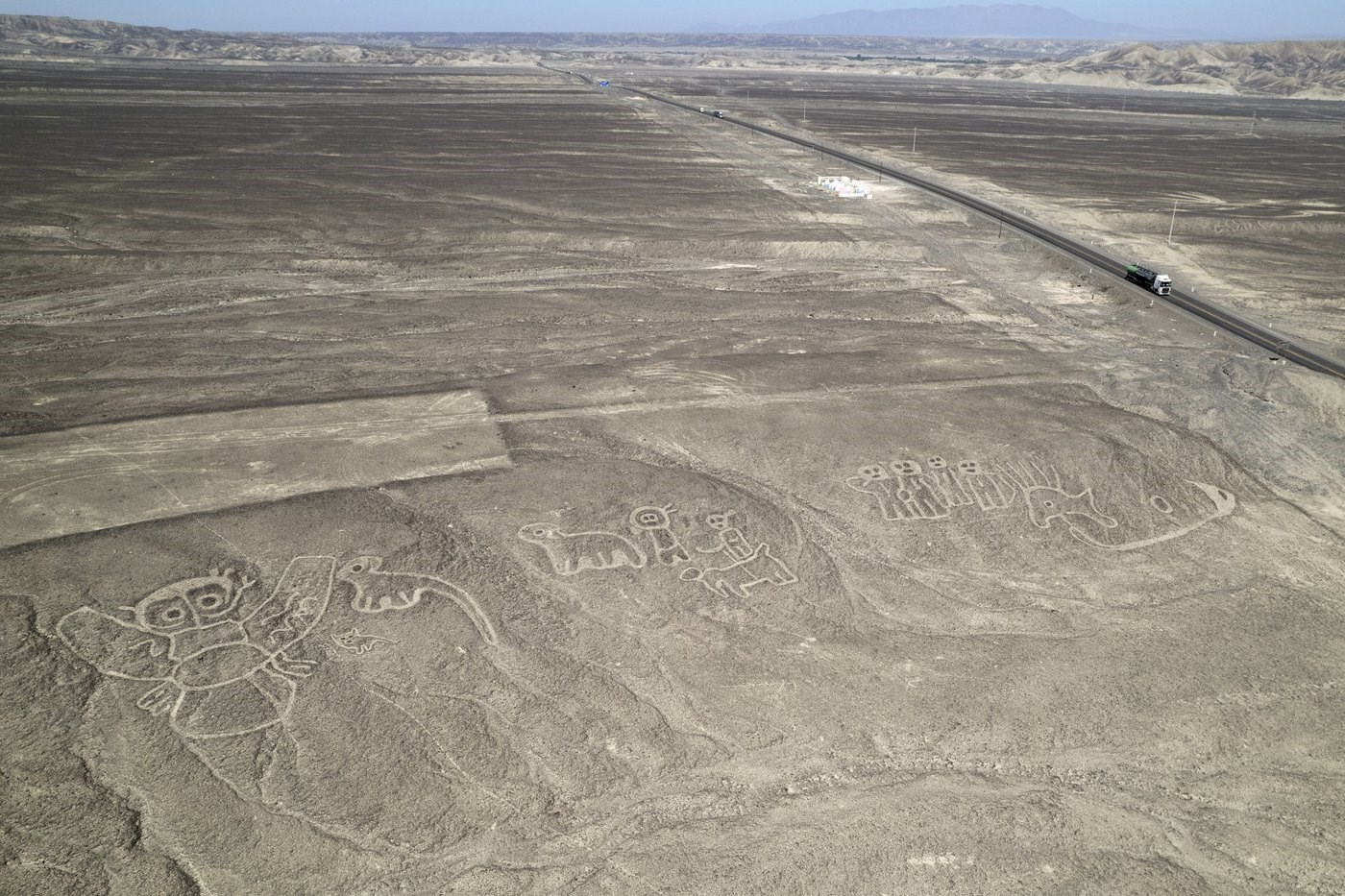
FILE - Geoglyphs known as the Nazca Lines are visible next to the Pan American Highway in La Pampa de Nazca, Peru, May 17, 2023. (AP Photo/Martin Mejia, File)
Republished June 03, 2025 - 3:41 PM
Original Publication Date June 03, 2025 - 2:41 PM
BOGOTA, Colombia (AP) — Peru announced Tuesday that miners who had been operating illegally in a large protected archaeological reserve around the famous Nazca Lines will now be able to start the process of obtaining mining permits, after the government reduced the protected area by 42%.
Energy and Mines Minister Jorge Montero said those working in the area must now legalize their mining activities since the zone is no longer designated as archaeological heritage.
“You’re fully illegal when you operate in a place where mining is banned ... but since that cultural heritage restriction no longer exists, they’re no longer in violation — they’ll need to formalize their operations,” Montero said in a press conference in Lima on Tuesday for correspondents working for the international media.
He added that the government does not yet know how many miners are currently active there.
The area in question forms part of a UNESCO-recognized World Heritage Site, home to the Nazca Lines — massive geoglyphs etched into the desert thousands of years ago — and one of Peru’s most fragile desert ecosystems.
Last week, the Ministry of Culture issued a resolution reducing the protected area around the Nazca Lines by 2,397 square kilometers (925 square miles). The reserve, created in 1993, was set at 5,633 square kilometers (2,175 square miles) in 2004.
“It's incredible how the government is not even interested in the heritage of our ancestors that is unprotected, and will be destroyed without any control,” Peruvian environmental lawyer, Cesar Ipenza, told The Associated Press.
Ipenza said once the miners enter, they will create huge environmental impacts, and will not assume responsibility.
“And now that the government has released the area from its protection, mining petitions have already started to appear,” he said.
Culture Minister Fabricio Valencia said the reduction was based on “over 20 years of rigorous studies” and that the true archaeological reserve is about 3,200 square kilometers (1,235 square miles). On Saturday, he acknowledged on local Peruvian media that mining was taking place within the reserve.
Valencia said the UNESCO World Heritage site that contains the Nazca Lines themselves, covering about 450 square kilometers (174 square miles), was not affected by the change.
The AP reviewed the resolution but found no details about the studies justifying the reduction. Requests for those studies went unanswered and UNESCO told AP it had not been notified by Peru of the change and that it will seek information from the government.
In past years, Peru’s Culture Ministry, prosecutors, and media reported illegal mining inside the protected reserve, including the destruction of mining machinery and camps.
___
The Associated Press’ climate and environmental coverage receives financial support from multiple private foundations. AP is solely responsible for all content. Find AP’s standards for working with philanthropies, a list of supporters and funded coverage areas at AP.org.
News from © The Associated Press, 2025